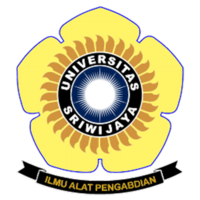The Role Of Terrestrail Watery in Controlling Annual Parasite Index Of Malaria: Studi in Lampung Province
Abstract
The roles of terrestrial watery on supporting some livelyhood have been much
revealed, but not for malaria incidency. This research conducted in Lampung
Province, Indonesia took place from October-March 2018. The linear postulat
namely Ordinary Leasat Square (OLS) was applied at 10% significant level. The
respon variable was the [API]i,t which the i indices (i=1, 2, 3,...10) were connoted
the municipalities under the authority of Lampung Province, whereas the t
indices were the data years of 2009, 2012, and 2015. As for the predictor
variables were terrestrial watery namely the river body, lake, swamp, pady field,
fish pond, and mangrove accompanied by the annual average of air temperature
and rainfall as well as the everage elevetion of the 10 municipallities. The API
data were collected from the Service Office of Healthcare Affairs. Both the
climate variable were collected from the Service Office of Meterological,
Climatological and Geophysical Affairs. The evelation of 10 municipalities data
were extracted from the topographical maps. The 3 years series (2009, 2012, and
2015) of landsat image ETM+7 were downloaded from the situs of
www.earthexplorer.usgs.gov. The watery proportion’s area of the 3 years series of
the 10 municipallities were provided from the landsat interpretation accompanied
by ground checking. Optimizing parameters model was conducted by statistical
software. The results suggested that the watery terrestrial: (a) that could reduce
the API were water bodies included river, lake, and fish pond and (b) whereas that
could induce the API were pady field and mangrove.
Full Text:
PDFArticle Metrics
Abstract view : 150 timesPDF - 311 times
Refbacks
- There are currently no refbacks.
